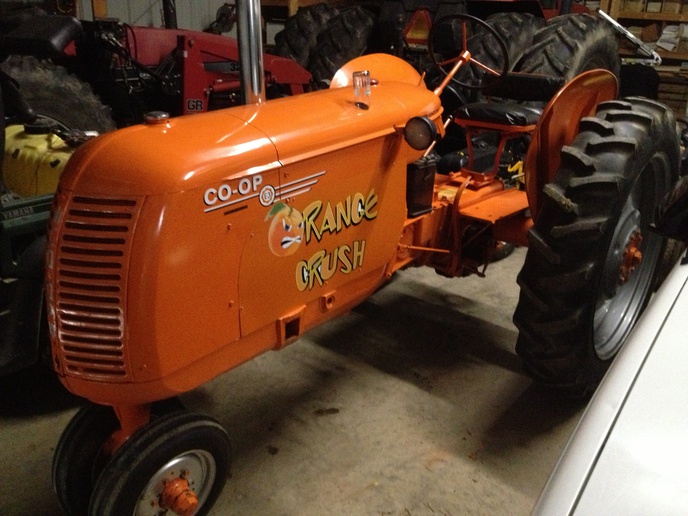My email should be open..if not let me know. Just send me an email and I will answer all your questions. May take me a day or two haven't been getting on the computer much.
Follow the link below to learn a little more of the history of the Cockshutt company. As stated the Co-op E3 was the same as the Cockshutt 30 and the Gambles Farmcrest 30.
Cockshutts were built in Canada. The Co-op line were sold out of Co-ops in select states in the US. Cockshutts were red with yellow wheels, Co-ops were all orange. Around 1952/53 they stopped making the Co-op and they all were Cockshutts. (Gambles were sold from Gambles feed stores in such states as Ill and Neb) I can tell you more if you like and supply you with parts suppliers. I am working, ok i haven't started, a master list of part suppliers for the Cockshutt Club members.
http://www.cockshutt.com
Cockshutt 30 Co-op E3- 2-3 Plow Rated
The Model 30 was Cockshutt's first tractor and was produced at the Brantford, Ontario plant. Other tractors had worn the Cockshutt name in the past, but were manufactured by either Oliver or Allis-Chalmers in the U.S. The Model 30 was a result of planning and design work that had been ongoing during the war years and culminated with the Cockshutt Plow Company Board of Directors' decision to build a tractor rather than buy one to market to their farm equipment customers.
Testing in the field of various engines available at the time resulted in selection of the four-cylinder Buda overhead valve with 153 cubic inches. A four-speed transmission from Wisconsin Axle was determined to be most compatible with the innovative LIVE power take off unit that was destined to put the Model 30 and the name Cockshutt "on the books!"
No other manufacturer to date had mastered the challenge of LPTO. Cockshutt engineers had designed a shaft "within a shaft" driven directly off the engine to a PTO clutch which permitted PTO-driven equipment to continue to operate even when the transmission clutch was engaged and the tractor was stopped, thus preventing painstaking, time wasting unclogging of equipment and allowing the operator to remain safely on the tractor.
LPTO was optional on the Model 30, but from the time Gordon Cockshutt drove the first one off the Brantford line on October 7, 1946, few were ordered without the LPTO option. Soon after the Model 30 premiered, engineers added an optional 2-speed gearbox to the transmission giving the 30 eight forward speeds and two reverse which made it much more versatile in matching ground speed to PTO driven equipment. So equipped, the Model 30 had at least two more forward speeds than any other tractor in its class!
By 1947 the engineers had perfected another innovative option available for the Model 30 - LIVE hydraulics. A gear driven pump, attached to the governor drive ran a 6-qt. system developing 1200 psi with a Pesco valve that operated a cylinder on the rockshaft. Later Model 30s had a hydraulic system mounted atop the final drive unit but still used the governor driven pump. By 1952 Cockshutt had the leading design on a remote hydraulic cylinder and they continued to refine their optional Class I, 3 pt. hitch system.
The first Canadian tractor tested at the Univ. of Nebraska, the Model 30 became available with a diesel engine in 1949, a distillate option in 1950, high altitude head in 1952 and an LP model in 1953. With the gasoline engine, Nebraska ratings showed maximum drawbar horsepower of 27.25 and 31.88 on the belt pulley. During the nearly ten year run of the Model 30, Cockshutt records show 37,328 were produced - their most successful model based on production!
Note: The above information is NOT to be reprinted for distribution or any commercial use without permission of the International Cockshutt Club, Inc. To learn more, we recommend purchasing our book, Cockshutt: The Complete Story, published in 1999 by the American Society of Agricultural Engineers. To order, click the book cover on our home page.

